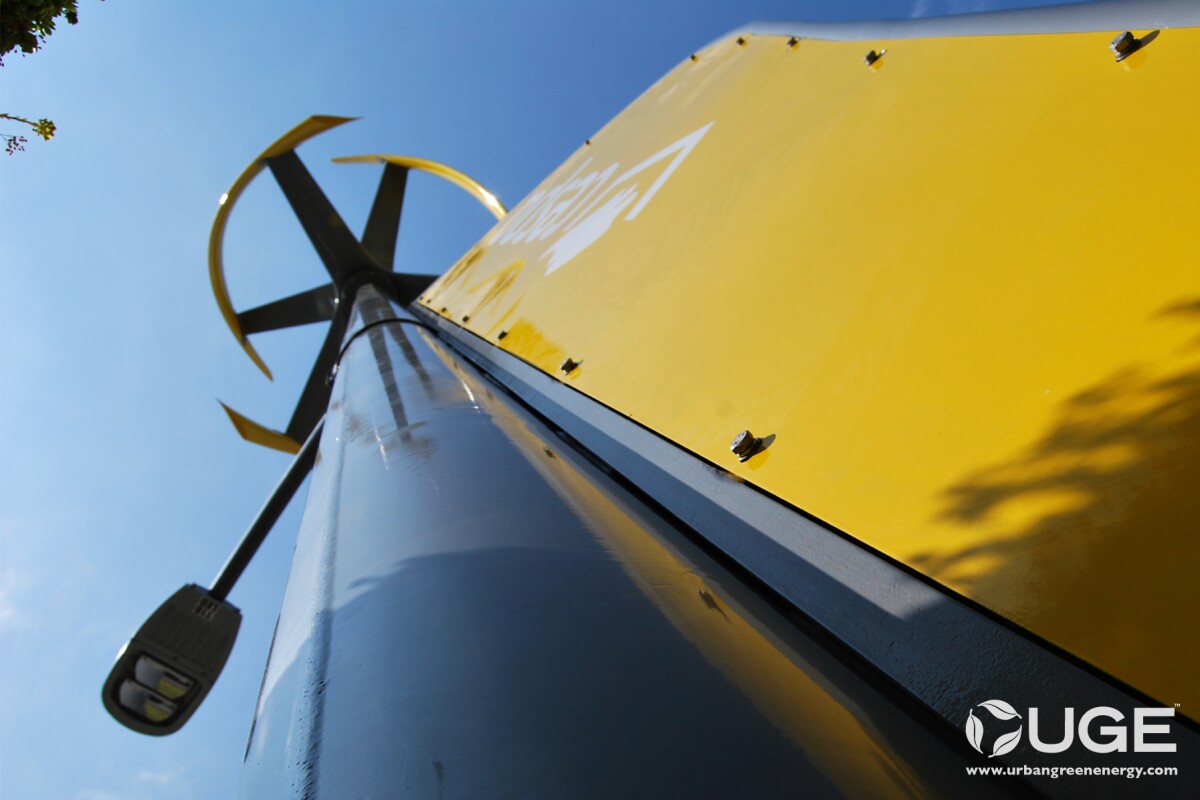What's claimed to be the world's first fully integrated wind-powered electric vehicle charging station has just been unveiled in Barcelona, Spain. The Sanya Skypump marries a 4 kW turbine developed by New York's Urban Green Energy (UGE) and General Electric's (GE) WattStation charging technology to offer users the chance to juice up an EV using clean, renewable energy.
Designed primarily for commercial and government customers, the first installation of the Sanya Skypump at the Barcelona headquarters of waste management group Cespa was unveiled Tuesday. It features a 42 ft (13 m) high tower of galvanized steel that has a 77W LED light (6930 lumens) just over half way up and is topped by UGE's 4K vertical wind turbine (which, as the name suggests, has a rated output of 4,000-watts).
GE's WattStation (or Durastation, depending on where in the world you're reading this) sits at the bottom in a housing that protects all of the electronic components from the elements and features a touchscreen display for selecting the different charging options on offer and if/how you'd like to be notified when your EV is juiced up.

"The Skypump as a whole is interconnected to the grid, which makes it a very versatile unit," UGE's Mateo Chaskel told us. "When there is no car charging, the turbine still produces energy and sends it seamlessly to the grid, creating an economic benefit for the customer. Likewise, when there is no wind and a car needs to charge, it simply pulls the energy as needed from the grid."
"I believe GE's charging station is capable of charging an EV in as little as four hours. However, in the locations where these will be installed, we see them being used somewhat differently. We foresee them being used, for example, in commercial establishments where customers can charge their EV for an hour or so, while they shop, eat, go to the movies, and so on - creating both a benefit for the customer and an additional service to offer for the mall, supermarket, or restaurant."
The Sanya Skypump will make its U.S. and Australian debut later this year.
The following short video shows the Barcelona installation in operation:













